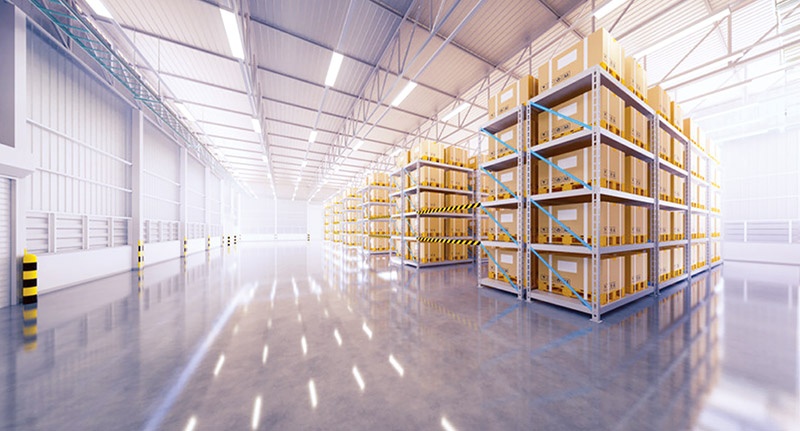Cold chain logistics in high demand
 |
| Aleks Leitmanis, Director of Project Services (left) and James Crafter, Senior consultant, TMX Vietnam |
In recent years, the growing middle-class segment has developed an appetite for fresh produce as seen in the steady demand for fruit and vegetable imports from countries such as the United States, Australia, China, Japan, South Korea, and Thailand. In the first two months of 2021 alone, the total value of imported fruits and vegetables reached $259 million, a 30.7 per cent year-on-year increase from 2020.
In addition, the volatilities brought about by the pandemic continues to reshape the business industry resulting in changes in consumers’ purchasing behaviour, one of which is the shift from in-store buying to online shopping. This shift in the purchase is driving growth for online marts and e-grocery stores that don’t need physical shops to cater to customers, allowing them to operate with reduced operating costs and expanded distribution channels.
In addition, consumers receive the goods almost untouched with high quality maintained, versus choosing something from a grocery store that would already have been transported and handled more often. However, this presents added competition for traditional markets and stores when it comes to getting steady and uninterrupted supplies of fresh produce and meats.
The state of cold chain logistics
The cold supply chain is currently a scarce market with comparatively low supply in several countries, including Vietnam. According to Euromonitor International, the Vietnamese cold food industry (excluding seafood) was valued at around $1.2 billion in 2019. However, in December 2019, Vietnam only has 48 cold warehouses with a total capacity of 600,000 pallets.
The southern area has 36 cold stores with over 526,000 pallets, while there were 11 cold warehouses holding nearly 55,000 pallets in the North and only one cold warehouse located in the Central region with a capacity of 21,000 pallets. 80 per cent of the currently operated cold storage warehouses have been fully utilised.
The pandemic also emphasised the crucial function of the cold chain as consumers’ buying habits evolved during lockdown, from buying fresh from local wet markets to turning to online grocery stores. The demand is prompting business operators to respond by building more cold storage space to manage the unpredictability of global supply imports disrupted over the past two years, which resulted in a construction boom in the country.
By the fourth quarter of 2020, the southern region’s cold storage leasing price had risen to $87 per ton, up by 1.67 times compared to January 2020. This only underscores the demand for and the lack of currently available cold storage facilities in the country.
Operating a compliant cold storage warehouse is challenging because of the need to keep a steady temperature of the storage chamber and the products kept within the facility. These include maintaining the right temperature for proper food storage while ensuring that the staff and equipment are kept warm enough to perform efficiently.
Transporting goods has many of the same rigid requirements as the condition of temperature-sensitive products in transit and must be maintained to retain its quality when it reaches its destination – whether that is a warehouse or the cold storage area of a grocery store. Apart from cold storage and refrigerated trucks that are commonly used to deliver the products closer to end consumers, other means of cold transport include refrigerated containers for land and sea freight and temperature-controlled air freight which may be used for higher-value perishable produce.
A key factor in maintaining cold storage facilities is the cost of the upkeep, with energy consumption amounting to 10 per cent of operating costs. Therefore, cold storage owners are constantly looking for solutions to reduce these costs with technological advances and efficient designs. In addition, the significant consumption of energy is also a big contributor to gas emissions.
These are important considerations, especially in the post-pandemic context when a more sustainable supply chain process is expected from industry players. Therefore, exploring alternatives that are both cost-efficient and eco-friendly, such as solar panels and water regeneration systems, needs to be considered a key factor when designing a cold storage facility.
 |
| Storage owners are constantly looking for new answers as maintaining cold facilities is a costly process |
Market gaps and potential
Despite the many challenges of maintaining cold storage facilities, it still has a high potential in the country due to the lack of players in this segment. There are several reasons why cold chain logistics will only be expected to grow in the coming years.
The first is reduced wastage of vegetables, fruits, and other fresh produce. According to the Ministry of Agriculture and Rural Development, the value of exports of vegetables and fruits hit $3.1 billion in the first ten months of 2019, with 67.7 per cent accounting for the Vietnamese fruit and vegetable export market and nearly 20-25 per cent post-harvest losses each year. However, the Vietnamese government aims to decrease the rate of loss to under 10 per cent - making cold chain logistics instrumental to achieving this.
Another factor is earning long-term profits. Significant investment returns and profits are achievable through the investment of high-quality cold chain systems. Continued urbanisation, mindfulness in food wastage, and the increase in consumers’ spending power all lead to sustained demand for cold chain development from now and in the years to come. Investing in good quality cold storage facilities and equipment is a way to help businesses gain long-term profits because if the right investment is made, minimal costs are needed for maintenance and upkeep.
Next up is cost-effectiveness. Investing in cold storage facilities is a cost-effective way to maximise the shelf-life of products and minimise losses. While cold storage requires significant investment, around $1 per pallet daily, it could lead to higher revenue returns with high-quality products with longer shelf life. Businesses can use their time, money, and area with optimum efficiency and pass on costs to customers by providing high-quality fresh produce products.
Finally, with the increasing need for cold chain logistics, Vietnam needs to develop more infrastructure to meet the demand. Currently, the limited number of cold storage warehouses are predominantly built in the southern area of the country, of which about one-quarter is owned by foreign investors. Most providers only serve a small part of the market, and the market does not have too many big names in the field, making this a lucrative segment for pioneering local businesses.
In addition, businesses integrating temperature-controlled transport fleets are showing significant growth, as a result of the overall increase in the demand for imported fresh produce and meats in the country.
Recently, the Vietnam Association of Seafood Exporters and Producers requested the Ministry of Agriculture and Rural Development to assist organisations in constructing their cold storage facilities with a minimum capacity of 5,000 pallets. The association proposed that the government provide incentives and support investment policies for businesses, such as long-term loans without interest for the first two years or tax reduction up to more than 50 per cent in the next four years.
Industrial property like warehousing, or cold storage remains a largely untapped space, with strong growth regardless of the pandemic. Businesses in this field are expected to enjoy long-term benefits from consumers’ changing purchasing habits, as well as pandemic impacts.
What the stars mean:
★ Poor ★ ★ Promising ★★★ Good ★★★★ Very good ★★★★★ Exceptional
 Tag:
Tag:
Related Contents
Latest News
More News
- Global partnerships key to Vietnam’s IFC development (December 26, 2025 | 16:18)
- Vingroup pulls out of bid to invest in North-South high-speed railway (December 26, 2025 | 11:42)
- Strengthening supply chains through trade promotions and customs reform (December 24, 2025 | 14:00)
- PM orders investment model for North–South high-speed rail (December 22, 2025 | 17:43)
- LS Eco Energy to invest in Vietnam rare earth sector (December 22, 2025 | 17:31)
- Government moves to establish International Financial Centre (December 21, 2025 | 21:00)
- Vietnam's IFC to target global investment flows (December 21, 2025 | 18:00)
- Two national hospitals expand capacity with new facilities (December 20, 2025 | 09:00)
- Ha Tinh breaks ground on major Vingroup industrial and energy projects (December 19, 2025 | 18:24)
- EVN launches major power infrastructure projects nationwide (December 19, 2025 | 18:17)























 Mobile Version
Mobile Version